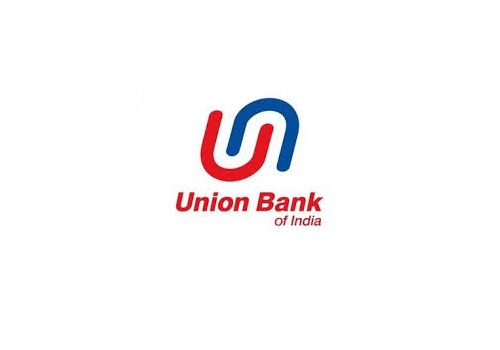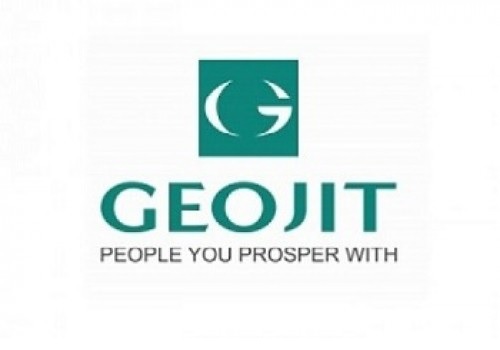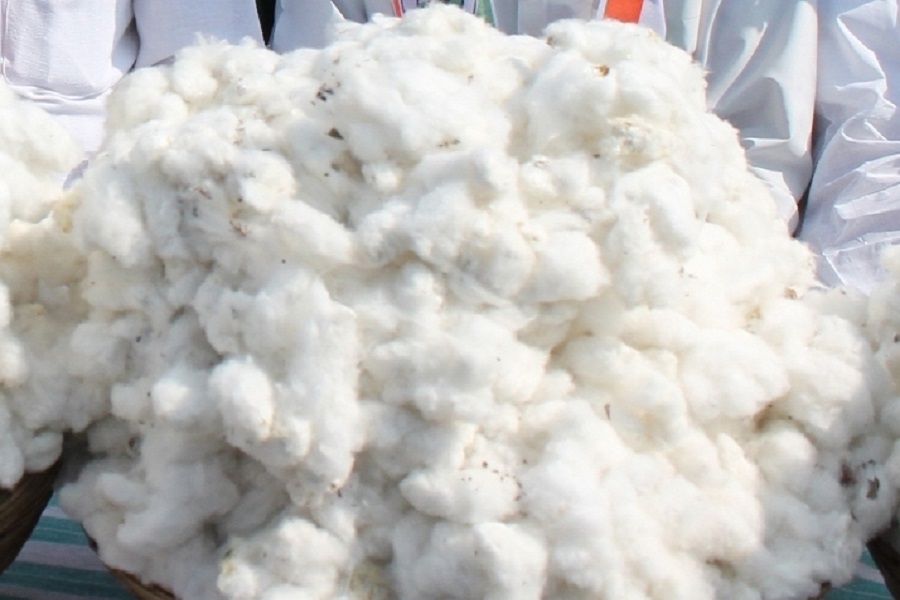Jeera trading range for the day is 20570-21410 - Kedia Advisory

Gold
Gold prices declined by 1.31%, settling at Rs 84,687 amid profit booking, as investors reassessed global risk sentiment and the Federal Reserve’s monetary outlook. The decline followed a hotter-than-expected U.S. CPI report, which was partially offset by a milder PPI reading, easing inflation concerns. However, geopolitical risks resurfaced as former U.S. President Donald Trump proposed reciprocal tariffs on countries taxing U.S. imports, a move that could fuel inflation and renew safe-haven demand for gold. Gold demand in India weakened after domestic prices hit a record high, forcing dealers to offer discounts of up to $26 per ounce to attract buyers. Similarly, China’s demand cooled post-Lunar New Year, with gold trading at par to an $18 discount per ounce. Meanwhile, the London Bullion Market Association (LBMA) reported that gold reserves in London vaults declined 1.7% in January to 8,535 metric tons, indicating lower market liquidity. The World Gold Council (WGC) projected a moderation in India’s gold consumption in 2025 to 700-800 metric tons, down from 802.8 tons last year, as high prices dent jewellery demand but boost investment interest in gold ETFs, coins, and bars. From a technical perspective, gold is witnessing long liquidation, with open interest declining by -7.25% to 15,384 lots. Key support levels stand at Rs 84,070, with further downside potential to Rs 83,455, while resistance is placed at Rs 85,830, with a breakout possibly pushing prices towards Rs 86,975.
Trading Ideas:
* Gold trading range for the day is 83455-86975.
* Gold dropped on profit booking as markets assessed global demand for safety and the outlook of the Fed’s monetary policy.
* Uncertainty over the Trump administration's policies on trade, tariffs and broader foreign policy continues to support bullion.
* Trump directed his economic team to formulate plans for reciprocal tariffs on every country that imposes taxes on U.S. imports.
Silver
Silver prices rose by 0.37%, settling at Rs 95,586, as demand for industrial applications, particularly in electrification and green energy, continued to provide strong support. The unexpected rebound in the U.S. ISM Manufacturing PMI signaled improved factory demand, boosting silver’s outlook. Additionally, China installed 357 gigawatts of solar and wind power in 2024, a key sector for industrial silver, while India’s ONGC pledged INR 1 trillion towards renewable energy. The U.S. decision to impose reciprocal tariffs on major trading partners also fueled safe-haven demand. The Silver Institute projected a fifth consecutive year of market deficits in 2025, with global silver demand expected to remain stable at 1.20 billion ounces. Industrial fabrication is forecast to rise by 3% to surpass 700 million ounces, driven by green energy applications. Physical silver investment is expected to increase by 3%, particularly in Europe and North America, while jewelry demand is set to decline by 6%, led by weaker Indian consumption due to high local prices. Silver supply is projected to rise by 3%, reaching an 11-year high of 1.05 billion ounces, with mine production increasing by 2% to 844 Moz and recycling growing by 5% to 200 Moz. From a technical perspective, silver saw fresh buying, with open interest rising by 2.88% to 20,451 lots. Key support is at Rs 94,490, with further downside potential to Rs 93,395, while resistance is at Rs 97,440, and a breakout could push prices towards Rs 99,295.
Trading Ideas:
* Silver trading range for the day is 93395-99295.
* Silver rallied as its demand in electrification and manufacturing magnified the support from a global pivot to safety.
* The unexpected rebound in the ISM Manufacturing PMI for January improved the outlook for US factory demand.
* Data showed that China put up 357 gigawatts of solar and wind power in 2024, among the main uses of industrial silver.
Crude oil
Crude oil prices declined by 0.76%, settling at Rs 6,149, as geopolitical tensions eased after reports of U.S. President Donald Trump speaking with Russian and Ukrainian leaders raised hopes for a peace deal. The potential lifting of sanctions on Moscow could increase global energy supplies, while the International Energy Agency (IEA) suggested that Russian oil exports might continue despite new U.S. sanctions. Additionally, a larger-than-expected rise in U.S. crude inventories added pressure on prices. The Energy Information Administration (EIA) reported a 4.1 million-barrel rise in U.S. crude stocks, exceeding market expectations of a 3 million-barrel build. Crude stocks at Cushing increased by 872,000 barrels, while refinery utilization rose by 0.5 percentage points. U.S. gasoline inventories declined by 3 million barrels against expectations of a 1.4 million-barrel build, whereas distillate stocks increased slightly by 0.1 million barrels, defying forecasts for a drop. Meanwhile, global oil demand reached 103.4 million barrels per day, up 1.4 million bpd year-on-year, according to JPMorgan. The EIA revised its 2025 U.S. crude oil production estimate upward to 13.59 million bpd, maintaining U.S. petroleum consumption at 20.5 million bpd. From a technical standpoint, crude oil faced fresh selling pressure, with open interest surging by 28.33% to 12,307 lots. Key support is at Rs 6,108, with further downside to Rs 6,066, while resistance is at Rs 6,219, and a breakout above could push prices towards Rs 6,288.
Trading Ideas:
* Crudeoil trading range for the day is 6066-6288.
* Crude oil dropped as geopolitical concerns eased a bit amid hopes of an end to the Russia-Ukraine war.
* US reciprocal tariff recommendations expected in April
* Ukraine peace talks could pave way for Russia sanctions easing
Natural gas
Natural gas prices surged 2.31%, settling at Rs 323.8, driven by increasing LNG export flows, declining daily output, and colder-than-expected weather forecasts. The National Weather Service predicts frigid conditions over most states east of the Rocky Mountains, sustaining demand and keeping prices elevated. Average gas output in the Lower 48 U.S. states rose to 105.6 billion cubic feet per day (bcfd) in February, up from 102.7 bcfd in January, when freeze-offs disrupted production. However, extreme cold has again reduced daily output, which dropped 3.2 bcfd over the past eight days to a three-week low of 103.6 bcfd. Storage withdrawals also provided support, with U.S. utilities pulling 100 billion cubic feet (bcf) from storage in the week ending February 7, reducing inventories to 2,297 bcf. This exceeded market expectations of 92 bcf, as heating demand spiked to record highs. The sharpest declines occurred in the Midwest (-46 bcf) and East (-39 bcf). Current storage levels are 9.7% lower than last year and 2.8% below the five-year average. The EIA projects record U.S. gas output and demand in 2025, with dry gas production rising to 104.6 bcfd and LNG exports expected to hit 14.0 bcfd, up from 12.0 bcfd in 2024. From a technical perspective, natural gas remains in fresh buying territory, with open interest rising by 7.67% to 17,118 lots. Key support is at Rs 315.9, with a further downside to Rs 308, while resistance is at Rs 330.6, and a breakout above could push prices toward Rs 337.4.
Trading Ideas:
* Naturalgas trading range for the day is 308-337.4.
* Natural gas gained on rising flows to LNG export plants and a drop in daily output.
* Freezing wells cut US output over past week
* US gas production still on track for record high in February
Copper
Copper prices declined by 0.34%, settling at RS 864.9, as concerns persisted over potential U.S. tariffs on the metal following President Donald Trump’s 25% tariffs on steel and aluminum. If copper is targeted, it could raise costs for U.S. buyers, further disrupting global trade. Despite this, strong U.S. manufacturing activity and expectations of additional Chinese economic stimulus provided some support to the market. The Shanghai Futures Exchange (SHFE) reported a 24.6% increase in copper inventories, signaling improved supply. However, tightening supply on the London Metal Exchange (LME) due to U.S. tariff fears led to a sharp increase in the cash-to-three-month copper premium, which surged to $71 per metric ton, the highest since October 2022. The International Copper Study Group (ICSG) reported a refined copper market deficit of 131,000 metric tons in November, widening from 30,000 metric tons in October. While the first 11 months of the year saw a 168,000 metric ton surplus, it marked a shift from the 89,000 metric ton deficit recorded in the previous year. November’s refined copper output stood at 2.34 million metric tons, while consumption reached 2.47 million metric tons. Meanwhile, China’s unwrought copper and copper product imports jumped 17.8% year-on-year in December to 559,000 metric tons, reflecting strong demand. From a technical perspective, copper faced long liquidation, with open interest dropping by 12.98% to 5,315 lots. Key support is at Rs 858.4, with a further downside to Rs 851.7, while resistance is at Rs 876.2, and a breakout above could push prices toward Rs 887.3.
Trading Ideas:
* Copper trading range for the day is 851.7-887.3.
* Copper dropped as markets reconsidered the risk of potential sanctions by the new US Presidential administration.
* Copper inventories in warehouses monitored by the Shanghai Futures Exchange rose 24.6%.
* The latest data revealed that traders raised their net long position in copper for the sixth consecutive week.
Zinc
Zinc prices declined by 0.13% to settle at 266.45 as Shanghai Futures Exchange (SHFE) inventories surged by 70.5% from last Friday. However, improved demand prospects in China and a weaker dollar helped offset concerns related to U.S. import tariff plans. The People's Bank of China (PBoC) reaffirmed its commitment to supporting economic growth through monetary policy adjustments, including interest rate cuts and changes to the reserve requirement ratio. Meanwhile, new bank loans in China hit a record high in January, boosting expectations of further stimulus. Global mined zinc production continued to decline for the third consecutive year in 2024, with refined zinc output in China dropping by 7% due to lower processing rates. Additionally, the Red Dog Mine in Alaska, which contributes 10% of global zinc production, is expected to slow in 2025 due to ore depletion. The global zinc market recorded a deficit of 52,900 metric tons in November, down from 65,400 tons in October, according to ILZSG. From January to November 2024, the global market faced a deficit of 33,000 tons compared to a surplus of 312,000 tons in the same period of 2023. Technically, the market is under long liquidation, as open interest fell by 5.62% to 2,468 contracts while prices declined slightly by 0.35 rupees. Zinc finds support at 264.8, with a break below likely to test 263. Resistance is seen at 269.5, and a move above this level could push prices toward 272.4.
Trading Ideas:
* Zinc trading range for the day is 263-272.4.
* Zinc dropped as zinc inventories in warehouses monitored by SHFE rose 70.5%
* LME Zinc hit its highest since January 22 while tin touched highest since November 5.
* PBOC said in its fourth-quarter monetary policy implementation report that it would adjust policy.
Aluminium
Aluminium prices rose 0.55%, settling at Rs 257.95, supported by supply tightness and expectations that U.S. reciprocal global tariffs would not take effect until April. Shanghai Futures Exchange aluminium inventories declined 4.9%, reflecting supply constraints. Meanwhile, Japan's bargaining power in quarterly aluminium premium negotiations weakened due to slow primary ingot imports and reduced holdings in overseas smelters. The People's Bank of China (PBoC) reiterated its commitment to support economic growth through monetary policy adjustments, including interest rate cuts and reserve requirement ratio reductions. Morgan Stanley noted aluminium would be the most affected metal under new tariffs due to its widespread use in transportation, construction, and packaging. China’s 2024 aluminium production hit a record 44 million tons, approaching the government-imposed cap of 45 million tons set to curb oversupply and meet carbon targets. Meanwhile, the U.S. aluminium premium surged 60% since Trump’s re-election in November 2024, reaching 35 cents per pound. China's unwrought aluminium and aluminium product exports reached 5.5 million tons in the first ten months of 2024, reflecting a 17% YoY growth. Aluminium output rose 4.2% YoY in December to 3.77 million metric tons, with daily production declining 1.7% MoM. Technically, the market is under short covering, with open interest down 2.19% to 2,548 lots. Aluminium has support at Rs 256.9, with a downside risk to Rs 255.8, while resistance is at Rs 259.2, and a breakout above could push prices to Rs 260.4.
Trading Ideas:
* Aluminium trading range for the day is 255.8-260.4.
* Aluminium prices climbed helped by supply tightness.
* Aluminium inventories in warehouses monitored by the Shanghai Futures Exchange dropped -4.9%
* Japan aluminium premiums likely to stay high, adding to inflation
Cottoncandy
Cottoncandy prices declined slightly by 0.07%, settling at Rs 54,000, as global production estimates signaled a strong supply outlook. Brazil’s 2024-25 cotton production is projected to increase by 1.6% to 3.7616 million tons, with a 4.8% expansion in planting area to 2.0369 million hectares, boosting supply expectations. Meanwhile, India’s cotton output is expected to decline to 301.75 lakh bales for the 2024-25 season, compared to 327.45 lakh bales in 2023-24, mainly due to lower yields in Gujarat, Punjab, and Haryana. However, CAI noted that cotton quality remains high. The total cotton supply till January 2025 is estimated at 234.26 lakh bales, consisting of 188.07 lakh bales from fresh pressings, 16 lakh bales from imports, and 30.19 lakh bales of opening stock. Domestic cotton consumption is projected at 315 lakh bales, with exports estimated at 17 lakh bales, significantly lower than 28.36 lakh bales in the previous season. Ending stocks for January 2025 are projected at 112.26 lakh bales, with a significant portion held by CCI, Maharashtra Federation, traders, and textile mills. On the global front, the U.S. cotton balance sheet saw minimal changes, with mill use reduced by 100,000 bales, raising the ending stocks-to-use ratio to 39%. China’s cotton production increased by 1 million bales, while Argentina and Kazakhstan reported declines, balancing global supply. Technically, the market is under long liquidation, with open interest unchanged at 258 lots. Cottoncandy has support at Rs 53,850, with a downside target of Rs 53,710, while resistance is seen at Rs 54,110, and a breakout above could push prices to Rs 54,230.
Trading Ideas:
* Cottoncandy trading range for the day is 53710-54230.
* Cotton dropped as Brazil’s 2024-25 cotton production is projected to be 1.6 per cent higher.
* CAI said the overall cotton output is estimated to dip to 301.75 lakh bales due to lower yield in Gujarat and the northern region.
* CCI is likely to buy more than 100 lakh bales of cotton at MSP during the current cotton year.
* In Rajkot, a major spot market, the price ended at 25542.5 Rupees dropped by -0.38 percent.
Turmeric
Turmeric fell by 1.59% to close at 12,786 as weak demand and rising arrivals pressured prices. With harvesting progressing well, a significant portion of the crop is expected to arrive in the market within a month, keeping prices under check. However, the downside may be limited due to an estimated 10-15% drop in crop yields, particularly in the Nanded region, where small rhizomes and crop rots have been reported. The actual extent of the yield loss will be confirmed as harvesting advances in key producing areas. Arrivals in the spot market surged to 13,190 bags from 6,780 bags in the previous session, driven by increased supplies from major producing regions such as Nizamabad and Hingoli. As fresh crop arrivals continue, pressure on prices is likely to persist. On the export front, turmeric shipments between April and November 2024 rose by 9.80% to 121,601.21 tonnes compared to the same period in 2023. However, monthly exports in November fell by 20.18% from October levels. Meanwhile, imports during the same period surged by 101.80% to 18,937.95 tonnes, reflecting higher domestic demand. Technically, turmeric is experiencing long liquidation, with open interest dropping by 2.43% to 11,650 contracts. The market has immediate support at 12,512, with a break below potentially testing 12,238. On the upside, resistance is at 13,070, and a move above this level could push prices towards 13,354.
Trading Ideas:
* Turmeric trading range for the day is 12238-13354.
* Turmeric prices dropped on weak demand and marginal improvement in arrivals.
* New crop yields are expected to be 10-15% lower this year.
* Farmers have indicated that the yield may be lower than expected.
* In Nizamabad, a major spot market, the price ended at 12929.1 Rupees dropped by -1.68 percent.
Jeera
Jeera gained 1.32% to settle at 21,055 as concerns over delayed sowing in Gujarat and Rajasthan supported prices. The cumin crop in Gujarat has been delayed by about a month due to unfavorable weather conditions, affecting early arrivals. However, the upside remains limited due to weak domestic demand and sufficient stock availability. Farmers still hold around 20 lakh bags of cumin, with an estimated 3-4 lakh bags likely to be traded before the season ends, leaving a carry-forward stock of about 16 lakh bags. Despite this, the market is expected to remain firm, supported by steady production levels compared to the previous year. India’s cumin production increased to 8.6 lakh tonnes from an area of 11.87 lakh hectares in 2023-24, significantly higher than the previous year’s output of 5.77 lakh tonnes. Indian cumin remains the most affordable globally, attracting buyers, including China. Indian cumin is currently priced at $3,050 per tonne, while Chinese cumin is $200-$250 higher. Export demand has remained strong, with jeera shipments rising by 74.04% to 147,006.20 tonnes during April-November 2024 compared to the same period in 2023. However, November exports dropped by 28.92% from October, reflecting temporary fluctuations. Technically, jeera is in fresh buying mode, with open interest increasing by 0.77% to 2,742 contracts. Immediate support is at 20,810, and a break below could test 20,570. On the upside, resistance is at 21,230, and a move above this level could push prices toward 21,410.
Trading Ideas:
* Jeera trading range for the day is 20570-21410.
* Jeera gained as the start of the new crop of cumin in Gujarat has also been delayed by about a month.
* Due to unfavourable weather, this time the start of sowing of cumin was delayed by about a month.
* However upside seen limited as demand is low and the current export business is being met from the available stock.
* In Unjha, a major spot market, the price ended at 21408.75 Rupees gained by 0.66 percent.
Views express by all participants are for information & academic purpose only. Kindly read disclaimer before referring below views






















